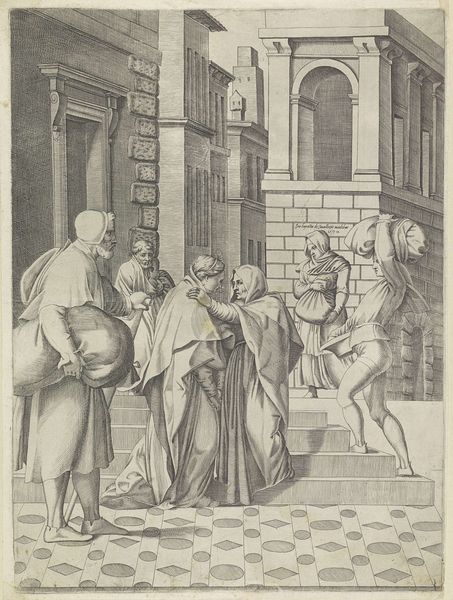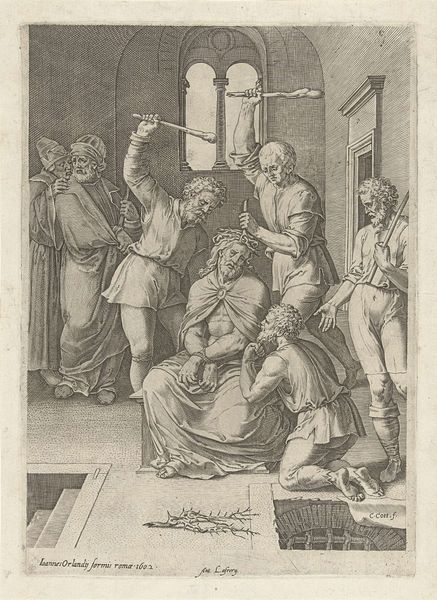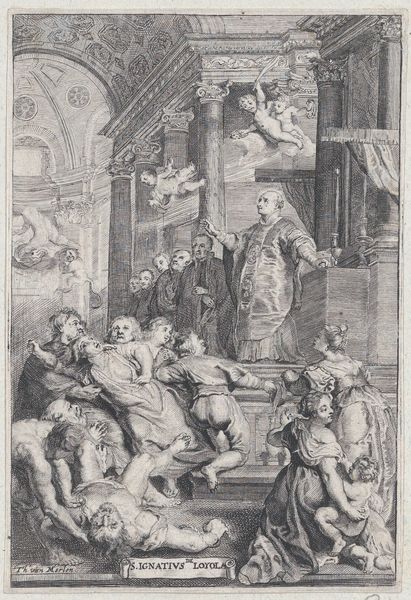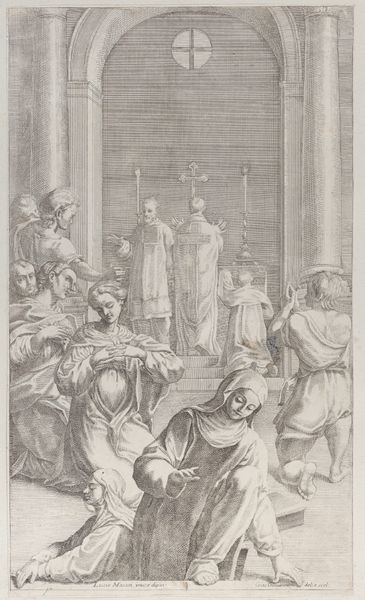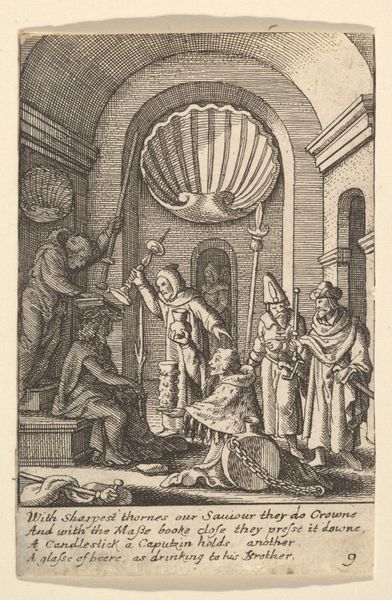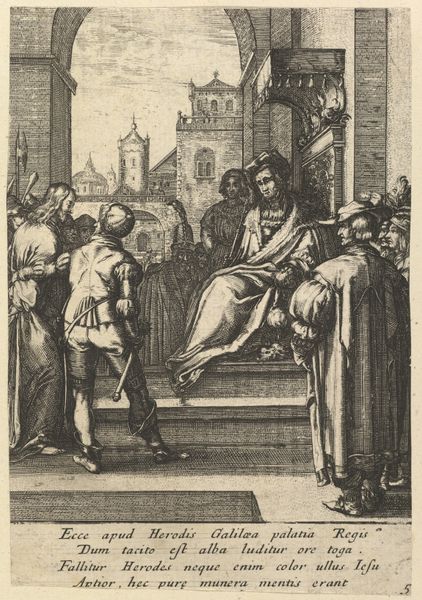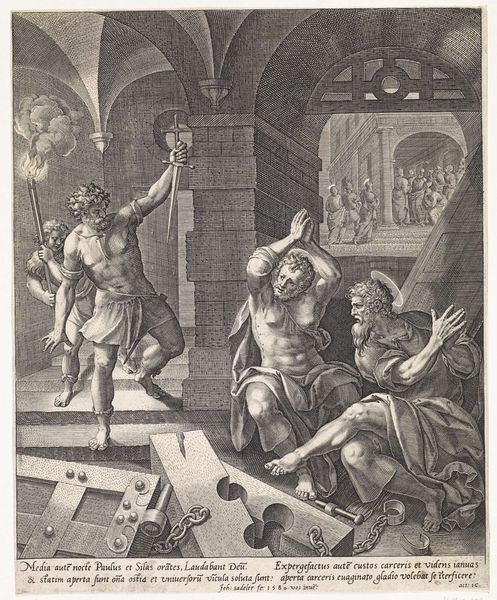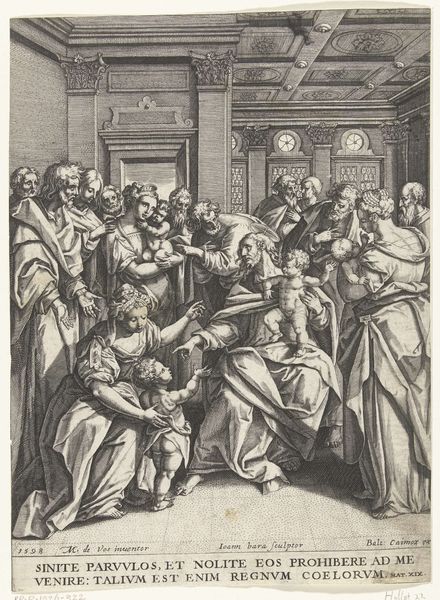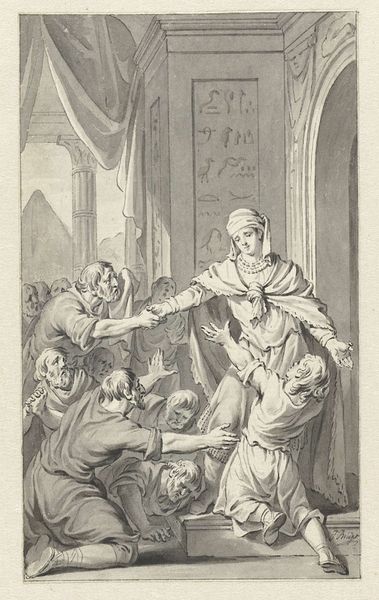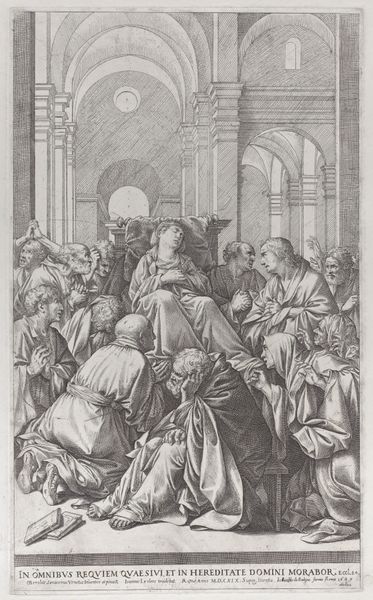
print, engraving
#
baroque
# print
#
old engraving style
#
figuration
#
genre-painting
#
history-painting
#
engraving
Dimensions: height 177 mm, width 130 mm
Copyright: Rijks Museum: Open Domain
Curator: Here we have Pieter de Jode I’s "Christus wordt door Pilatus naar Herodes gestuurd," an engraving from between 1590 and 1632. It depicts a key moment from the Passion. Editor: My first thought is how the stark contrasts in this print create a very harsh and almost brutal mood. You can almost feel the rough fabric of Christ's robe, the cold stone under Herod's feet... it's very immediate. Curator: Absolutely. De Jode uses the graphic qualities of engraving to highlight the power dynamics. Pilate, having realised Jesus is from Herod's jurisdiction, sends him off to face another judgement. Symbolically, the architecture is quite telling. Note the cold stone against the fragile flesh. Editor: Yes, and I am always drawn to architectural symbols. The column, the broken pillar segment in the foreground... Rome is beginning to crumble, symbolically perhaps? Justice is flawed? I see Herod on the platform as this detached figure almost untouched by the suffering before him. The detailing around his figure really emphasizes the way injustice functions within a cold and unfeeling structure. Curator: He stands in shadow, detached. It's a fascinating compositional choice. Christ, though the ostensible subject, is being tugged towards the background; yet, light illuminates Pilate pointing him away toward the secondary trial and ultimate death sentence. The way his halo glows amidst such rough handling brings the symbolism full circle. There's a painful humility in it, somehow. Editor: I agree, and there's also something about the almost faceless soldiers, or men at arms. Their forms are functional, they're just spears, and grips. You almost lose their humanity, again reflecting the callous treatment of Jesus. Even Pilate washing his hands to wash off responsability is something akin to them losing their faces for being used to perpetrate these injustices. Curator: Indeed. And even without color, de Jode evokes such texture—the shine on the armor, the dullness of the stone... Editor: It's a masterclass in black and white symbolism that transcends just the religious story and explores the weight of authority and morality, of choices and what symbols truly come to mean within our visual understanding of things. It resonates with the darker corners of human behaviour in a profoundly modern way. Curator: Ultimately, an important work in our collection at the Rijksmuseum. Editor: Yes, it leaves me with many threads to pull, ideas to mull over long after. It serves to say, what resonates now, and what continues to persist.
Comments
No comments
Be the first to comment and join the conversation on the ultimate creative platform.

